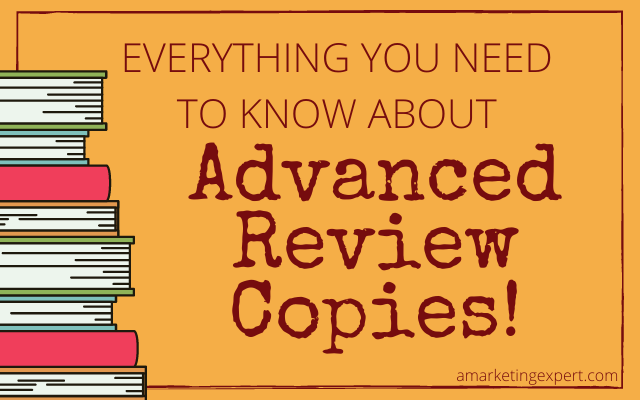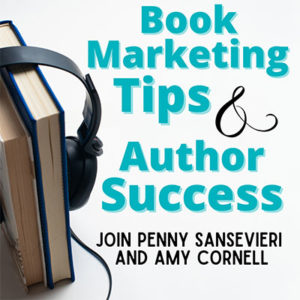When it comes to how to market a book, there’s a lot of industry “jargon” – like the terms ARCs and Galleys. And what’s even more confusing is how and when to use them!
First let’s discuss what these key marketing tools are.
ARCs and Galleys Explained
The term ARC stands for Advanced Review Copy. Galley essentially means the same thing but you’ll often see these two terms used interchangeably.
The term “Galley copy” is usually reserved for books that are still in the editing phase, meaning this version is maybe only 60% ready to go – it’s probably lacking a run-through by the author and needs one more content pass by an editorial team.
ARCs, however, are generally 80% ready to go and can be used for early promotion, when the final book isn’t “final” yet and when you’re doing early pitching. ARCs are often used for pre-publication review mailing, media mailing, long-lead bloggers, etc.
Do you always need to have ARC’s produced to market your book?
The answer is: it depends. You were kind of expecting that, right?
But we’ll cover the ins and outs of using advanced review copies or when you might want to skip them altogether.
What an Advanced Review Copy Should Look Like
As I mentioned above, these early copies of your book are generally versions that are 80% complete, meaning you probably have one more line edit to go through, the cover isn’t final – in some cases you may not have a cover at all. Check out this example of a Harry Potter book:
The term “uncorrected proof” or “advanced review copy” is often added to the front of the book, and in some cases if there’s a tentative cover mockup, some publishers or authors may opt to add this to the cover:
If your book is non-fiction, I’d suggest that the table of contents (TOC) is close to the final, if not the final.
The book layout may not be final either, so if you’re producing ARC’s, don’t worry if it’s not the final typeset version. But it should have a good layout, even if it’s in Word, so chapter breaks, page numbers, etc. Ideally if you aren’t creating an ARC with a semi-final book layout, your ARC interior should look at close to the final as you can get it, without having it professionally laid out in time to send early copies.
Print ARCs vs. Digital
Generally when we do early pitching for authors, we tend to use both. So we’ll have an electronic copy on hand for those who wish to get it that way, and a print copy for any mailings we’re doing.
If you’ve already created the outline for the printed ARC, creating a digital copy shouldn’t be that hard. Your digital copy can be a PDF, it doesn’t always have to be an ePub file.
Creating Advanced Review Copies
If you’re traditionally published, your publisher will already have a plan to create these.
If you’re with a hybrid or indie publisher – or a small, boutique house, they may not plan to create advanced review copies, so it’ll be your job to remind them, and if they’re unwilling to do it, then it’ll be your job to create these.
If you’re creating these on your own, you can easily do them at a copy shop – granted they won’t be cheap, but also not so pricey that you can’t add this to your marketing budget. If you’re working with a copy shop, ask them for tape binding, which makes the advanced review copy as close to the final book as possible, in terms of binding. Though spiral binding is often cheaper, it’s harder to mail so it’ll cost you more to do so.
How many copies should you print up? Don’t skimp on this step either. Better to have too many (we’ll talk about how to use any extras) than have to go back and reprint two or three more.
Make sure you know how many you’ll need and then add a few to that number. Count up the media you want to mail them to, and add five on top of that.
Advanced Review Copies: What goes on the back?
While it’s fine to create an advanced review copy without a final cover, you’ll want to add your book description, author bio and any early blurbs to the back cover.
As you’ll see from the sample below, there’s also room to add the promotion, which media and bookstores will always want to see. What else are you doing to promote your book? Add it to the back cover. I’ve also seen ARC’s with it on the front, too – there is no hard and fast rule. If you have lots of early blurbs to cram on the back, awesome (and lucky you!), so you can add your promotional plan to the front.
If you don’t have early blurbs or a set promotional plan, just keep your timing and release date in mind. If you want to hold off on creating ARCs hoping blurbs will come through or you find a marketing contract you’re ready to sign, that’s fine, as long as you don’t miss the ARC window entirely.
How to Market a Book – Early: What’s the Ideal Timing When You’re Using ARC’s
I generally use advanced review copies for early media and pre-publication reviews, as well as some long-lead bloggers and online media. I’ll mail these out early to get them into their cue early, but also to make sure they get the book ahead of their own magazine deadline or story cut off. You’ll also want to send some early copies to bookstores that you’re pitching for stocking consideration or events. And if you’d like some early blurbs and reviews, ARC’s work really well for that, too.
Typically advanced review copies are used six months out, and sometimes longer if you’re working with a publishing house.
But timing varies depending on who you are going after.
I’ve previously covered identifying magazine deadlines using their online calendars to see when issues close. But if you’re pitching media, let’s say a morning show – and you’re targeting them for the holiday market or some other big monthly observance, like Breast Cancer Awareness Month, know that even morning shows, which don’t always have long lead times, often do when it comes to big events like this. I’ve had producers tell me that, for example, they were already lining up their guests for Breast Cancer Awareness in the Spring or earlier. So if you aspire to bigger media, and getting these hits to line up with your publication day/week, you’ll want to start early and expect to do lots and lots of quality follow up.
Media and Blogger Follow Up
If you’ve done your early pitching with ARC’s, be sure to follow up with the final cover, and final book once you have it. This is especially true if you’ve secured a placement on a blog, media portal, magazine or show.
Can’t I Just Use My Final Book?
We pitch media and bloggers all the time with a final book, just know that if you are waiting till you’re a month away from release day, you may not get a lot of on-publication day exposure. And to be candid, 90% of our authors come to us on top of their publication date, so we’re often working with final books.
But if you have enough of a window to get copies our early, you can really start to spike your reviews, media hits, and sales, very early.
What Do You Do with Leftover ARC’s?
Here’s a little known secret about the publishing industry: ARC’s can be like gold. I’ve seen some sell on eBay for $15,000 – yes, you read right. Because such a limited number of these are printed, fans really love these! Now, I’m not suggesting you try to sell them on eBay, but why not offer a signed ARC to your most dedicated fans? It’s a great way to say “thanks for being a fan” and will make your readers feel super special!
Advanced review copies can be a great way market your book early and start reaching out to the busiest of media, bloggers, bookstores and reviewers!
Have you used ARC’s to promote your book? Let me know in the comments how you used them!








Thank you for a very informative and interesting article. Just wondering, where does the ‘back cover metadata’ go in a digital ARC? Is the ARC back cover included as the last page of the digital ARC PDF or ePUB? Or does the ARC back cover become the second page of the digital ARC behind the eBook cover? What is the most standard way to include that good metadata from the ARC back cover into the digital ARC? Thanks.
ARCs typically function to provide early access to a book’s content, for media, thought leaders, or reader groups, so the back cover isn’t really a factor – if someone requests an ARC they’re already convinced they want to give your book a shot. And think about this – when are back covers important? In bookstores. Or in other physical retail locations. They don’t really exist for online shopping. If someone buys a print book online it’s not the back cover that convinced them to buy. So while it’s smart to have excellent back cover content, it’s because it’s important to have every aspect of your brand be top-notch. Your book description for online retail is by far more critical to your overall success in today’s book buying market unless you’re a very lucky unicorn that’s secured excellent print distribution!
How do you approach retailers to offer Arc copies, in the hopes they will then stock your book?